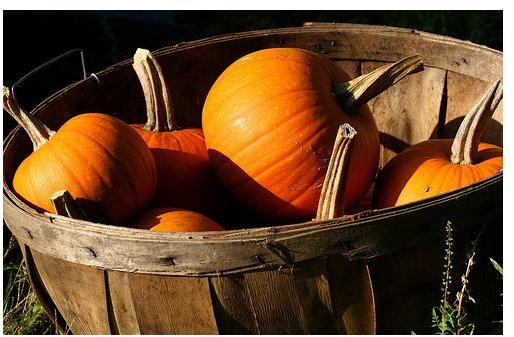Pumpkin Nutrition: The Value of Eating Both the Seeds and Flesh for Good Health
The History of Pumpkin Varieties
The pumpkin, or Cucurbita maxima, was once a food staple of the Americas. Both South and North American Indians ate pumpkin seeds and pumpkins for good health. They cultivated different pumpkin varieties along the river banks, next to squash, sunflowers, and beans. European explorers brought this autumn vegetable back with them to Europe, introducing the delicious fruit as well as pumpkin nutrition to the rest of the world.
The Ancient Americans ate different pumpkin varieties from the common bright orange, round vegetables of today. They were crooked-necked gourds, in yellows and pale oranges. Today there are dozens of pumpkin varieties, from the small, sweet orange Baby Bears, to the Australian stringless, slate-green Jarrahdales, and white-skinned, orange-fleshed Luminas.
Nutrition Facts
Pumpkins are a wonderful food for those looking for low-calorie sources of nutrition. Pumpkin is rich in minerals, such as potassium, magnesium, and iron, as well as a good source of folate and an excellent source of beta-carotene. Beta-carotene, a precursor to vitamin A, is a potent antioxidant that the body can almost never get enough of. It neutralizes unstable free radicals which would otherwise damage cells, promotes night vision and healthy cell growth.
Enjoy pumpkins for good skin health, whether it be pumpkin pie, pumpkin butter, sauteed or baked pumpkin, this beta-carotene rich food encourages skin repair, and benefits both acne-prone and very dry skin. By nourishing surface tissue, it helps prevent infection by protecting the body’s first line of defense — mucous linings.
Pumpkins are generally sweet and earthy. They can be baked whole, until the skin becomes caramelized. After peeling, and removing the seeds and stringy flesh, they can be cubed and then boiled, fried with butter, or steamed.
Nutritional Value of Pumpkin Seeds
Pumpkin nutrition does not only come from the flesh, but from the nutty, slightly sweet seeds. The nutrition in pumpkin seeds is in fact quite different from the pumpkin itself, with protein, and essential fatty acids. They also provide an array of minerals, with almost half the daily recommended amount of manganese, magnesium, and phosphorus in a one-fourth cup serving, and significant amounts of iron, copper, and zinc.
Eating pumpkin seeds also may alleviate symptoms of depression as they are an excellent source of tryptophan. Phytosterols, which are often found in nuts and seeds, are known to reduce cholesterol levels and strengthen the immune system. Pumpkin seeds are one of the best sources of phytosterols.
For the benefits of the nutrition in pumpkin seeds, toast them at a low temperature, less than two hundred degrees Fahrenheit, for a short amount of time, ten to fifteen minutes. This will preserve more of the nutritional value.
Although pumpkins are known as an autumn vegetable, they can be enjoyed all year round.
Sources:
World’s Healthiest Foods
photo credit: Muffet
